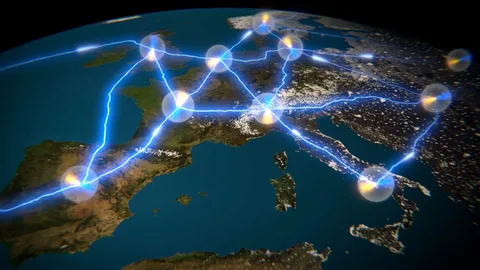Introduction
In the ever-evolving landscape of the internet, the quantum revolution has ushered in a new era—The Quantum Internet. This groundbreaking shift brings with it the necessity for quantum-safe cryptography to ensure the security of our digital interactions.
What is the Quantum Internet?
To comprehend the significance of quantum-safe cryptography, we must first grasp the concept of the Quantum Internet. Unlike its classical counterpart, the Quantum Internet utilizes the principles of quantum mechanics for communication, promising unprecedented levels of speed and security.
The Need for Quantum-Safe Cryptography
With the increasing sophistication of cyber threats, the need for quantum-safe cryptography becomes imperative. Traditional cryptographic methods, based on mathematical complexity, face the risk of being deciphered by powerful quantum computers, rendering them obsolete in the quantum era.
Understanding Quantum-Safe Cryptography
Quantum-safe cryptography, also known as post-quantum cryptography, is designed to withstand attacks from quantum computers. These cryptographic algorithms leverage the principles of quantum mechanics, ensuring that even quantum computers cannot compromise the security of encrypted data.
Quantum Key Distribution (QKD)
One of the cornerstones of quantum-safe cryptography is Quantum Key Distribution (QKD). Unlike classical key distribution methods, QKD leverages the principles of quantum entanglement to secure the communication channel and exchange cryptographic keys.
The Vulnerabilities of Classical Cryptography
Classical cryptographic methods, such as RSA and ECC, rely on the difficulty of certain mathematical problems for their security. However, quantum computers, with their ability to perform complex calculations at unprecedented speeds, pose a significant threat to these traditional cryptographic techniques.
How Quantum-Safe Cryptography Works
Quantum-safe cryptographic algorithms use mathematical structures that remain secure even in the face of quantum attacks. These algorithms include lattice-based cryptography, hash-based cryptography, code-based cryptography, and multivariate polynomial cryptography.
Real-World Applications of Quantum-Safe Cryptography
The implementation of quantum-safe cryptography extends beyond securing online communication. Industries like finance, healthcare, and government agencies are actively exploring its applications to safeguard sensitive data and communications.
Current Challenges and Future Developments
While quantum-safe cryptography presents a promising solution, there are still challenges to overcome. Research is ongoing to address issues like key size, algorithm efficiency, and seamless integration into existing systems.
Quantum Internet vs. Classical Internet
A comparison between the Quantum Internet and the Classical Internet reveals not just differences in speed but also a paradigm shift in security. The Quantum Internet’s ability to provide unconditional security marks a departure from the vulnerabilities inherent in classical cryptographic systems.
Security Implications for Businesses
In the corporate landscape, where data breaches can be catastrophic, the adoption of quantum-safe cryptography becomes a strategic imperative. Businesses must evaluate their cybersecurity strategies in anticipation of the quantum threat.
Adoption and Integration of Quantum-Safe Cryptography
As the quantum era dawns upon us, organizations need to proactively integrate quantum-safe cryptographic measures into their systems. Collaboration between industry experts and policymakers is crucial for establishing standards and protocols.
The Quantum Internet Era: What to Expect
With the advent of the Quantum Internet, we can anticipate a revolutionary shift in how we connect and communicate. Enhanced security, faster data transfer, and novel applications are on the horizon.
Quantum-Safe Cryptography Best Practices
Implementing quantum-safe cryptography requires adherence to best practices. Regular updates of cryptographic protocols, continuous monitoring for vulnerabilities, and staying informed about advancements in quantum computing are essential steps.
Conclusion
In conclusion, the Quantum Internet brings forth exciting possibilities, accompanied by the pressing need for robust security measures. Quantum-safe cryptography emerges as the key to ensuring that our digital future remains secure and resilient in the face of quantum advancements.
Frequently Asked Questions (FAQs)
Is quantum-safe cryptography already in use?
- Yes, some organizations have started implementing quantum-safe cryptographic measures in anticipation of the quantum threat.
How does Quantum Key Distribution work?
- Quantum Key Distribution uses quantum entanglement to securely exchange cryptographic keys, ensuring a quantum-safe communication channel.
What industries benefit the most from quantum-safe cryptography?
- Industries such as finance, healthcare, and government agencies benefit the most due to the sensitive nature of their data.
Are there any limitations to quantum-safe cryptography?
- Current challenges include issues related to key size, algorithm efficiency, and integration into existing systems.
How can businesses prepare for the quantum era?
- Businesses should proactively adopt and integrate quantum-safe cryptographic measures, collaborate with industry experts, and stay informed about developments in quantum computing.
